#Near-East
Explore tagged Tumblr posts
Text
Child's Writing Exercises and Doodles, from Egypt, c. 1000-1200 CE: this was made by a child who was practicing Hebrew, creating doodles and scribbles on the page as they worked

This writing fragment is nearly 1,000 years old, and it was made by a child who lived in Egypt during the Middle Ages. Several letters of the Hebrew alphabet are written on the page, probably as part of a writing exercise, but the child apparently got a little bored/distracted, as they also left a drawing of a camel (or possibly a person), a doodle that resembles a menorah, and an assortment of other scribbles on the page.
This is the work of a Jewish child from Fustat (Old Cairo), and it was preserved in the collection known as the Cairo Genizah Manuscripts. As the University of Cambridge Library explains:
For a thousand years, the Jewish community of Fustat placed their worn-out books and other writings in a storeroom (genizah) of the Ben Ezra Synagogue ... According to rabbinic law, once a holy book can no longer be used (because it is too old, or because its text is no longer relevant) it cannot be destroyed or casually discarded: texts containing the name of God should be buried or, if burial is not possible, placed in a genizah.
At least from the early 11th century, the Jews of Fustat ... reverently placed their old texts in the Genizah. Remarkably, however, they placed not only the expected religious works, such as Bibles, prayer books and compendia of Jewish law, but also what we would regard as secular works and everyday documents: shopping lists, marriage contracts, divorce deeds, pages from Arabic fables, works of Sufi and Shi'ite philosophy, medical books, magical amulets, business letters and accounts, and hundreds of letters: examples of practically every kind of written text produced by the Jewish communities of the Near East can now be found in the Genizah Collection, and it presents an unparalleled insight into the medieval Jewish world.
Sources & More Info:
Cambridge Digital Library: Writing Exercises with Child's Drawings
Cambridge Digital Library: More About the Cairo Genizah Manuscripts
#archaeology#anthropology#history#artifact#middle ages#medieval#near east#egypt#cairo#children in archaeology#judaism#medieval jews#hebrew#writing exercise#doodle#art#cairo genizah#jewish history#reminds me of onfim#kids have always been kids
9K notes
·
View notes
Text
Your reminder to Click for Palestine today!
And/or donate directly to the UNRWA if you have the means!
#unrwa#unrwafunding#DonateToUNRWA#united nations relief and works agency for palestine refugees in the near east#end israeli occupation#colonialism#colonizers#make a difference in the world#how to make a difference#humanitarian assistance#humanitarianism#end israel’s genocide#israel#free west bank#donations#gaza genocide#reminder blog#help palestine#help gaza#anti zionism#israeli occupation#freedom for Palestine#free gaza#jerusalem#no more war#colonization#make a difference#how to help#humanitarian aid#humanitarian crisis
4K notes
·
View notes
Text
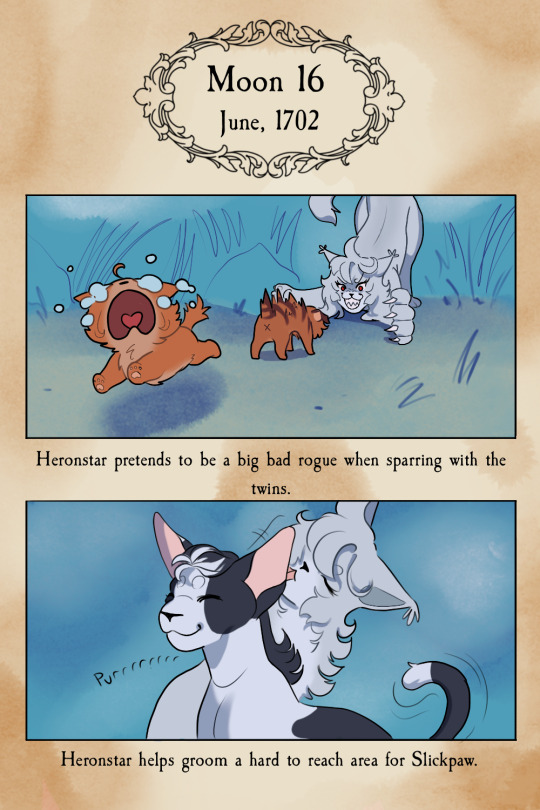
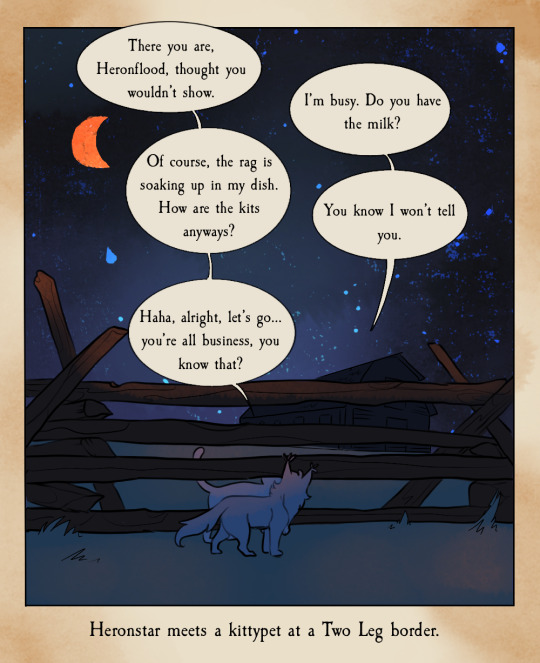
Moon 16: Mystery Kittypet…
PREVIOUS l NEXT
#warrior cats#clangen#clangen warrior cats#warriors oc#wc oc#wc#jcmoons#if you were in the east coast near historic sites you know these damn fences#weird ass wood fences#also I hope this starts to explain the milk for the kits#who is this cat.....#hmmm….#sorry this is late I’m very tired lol#I realize this is in the queue for Tuesday not Wednesday lol oh well
1K notes
·
View notes
Text

~ Man and woman in loving embrace.
Place of origin: Iraq, Nippur
Period: Achaemenid Period
Date: 450 B.C.
Culture: Near Eastern
Medium: Terracotta
#ancient#ancient art#history#museum#archeology#ancient sculpture#ancient history#archaeology#man and woman in a loving embrace#man#woman#love#hug#embrace#nippur#iraq#near east#near eastern#achaemenid#450 b.c.
1K notes
·
View notes
Text
People be like "Russia is not imperialistic"🤡 - and then the most famous Ukrainian chef cannot open a restaurant of the most famous Ukrainian cultural food in Japan, because Japanese widely consider borscht a Russian dish and so would avoid the restaurant thinking it to be Russian🫤🫤🫤🤯🤯🤯

#ukraine#japan#ukrainian culture#borscht#russian imperialism#russian invasion#ruscism#genocide#like.... thank you to Japanese for avoiding all Russian products#and for supporting Ukraine#this is not your fault#its fucking Russia's and its imperialism#moreover#the far East of Russia is where Russian regime forcefully displaced many Ukrainians#during Soviet times#so I am almost sure Japan actually learnt borsch from Ukrainians#they just belived it to be Russian cause it was coming from Russian territory near them🫤#culture appropriation#україна#укртумбочка#укртумба#укртамблер#ukrainian cuisine#yevhen klopotenko
692 notes
·
View notes
Text
Back in 2005 east coast USA Guilty Gear fans had unimaginable beef with west coast GG fans. This was because a large majority of scans, translations, and guides were written by east coast fans and the west coast fans would always repost them without credit. They were also a little jaded that the west coast would get all the cool official tournaments/conventions while the east coast got lake effect snow
However, the beef was one-sided because the west coast fans seemingly did not notice how mad the east coast fans were because neither side ventured out of their very small niche forums that always died after 3 years
Then there were the humble Alaskans putting the first rips of PS2 Guilty Gear game assets online by plugging their Playstations directly into their Macs and pulling off some crazy wizard shit
#textpost#While waiting for my computer to process files this past week I've been Wayback Machine deep diving#It's been really really funny#The Alaskans seem to have sided with the east coast fans#Which I suppose makes sense. They both get stupid amounts of snow and -30f wind chill in the winter#I also think it's funny just how many scans and translations and whatever the hell else still comes from the east coast#Ohio specifically. Why are there so many GG fans in Ohio or very near the Ohio border#What is going on here#(rhetorical. everyone knows it's the Rock n Roll Hall of Fame radiation)
57 notes
·
View notes
Text


#current events#Syria#Damascus#basher al-assad#it’s breaking and it’s midnight on the east coast#also words is his plane went down#rb9218 on flightradar dropped off radar near mountainous terrain per the gossip
42 notes
·
View notes
Text

Bodiam Castle - ENGLAND
#bodiam#castle#castillo#near#cerca#robertsbridge#east sussex#england#inglaterra#united kingdom#reino unido#europe#europa
187 notes
·
View notes
Text
underfell yellow i say HELLO

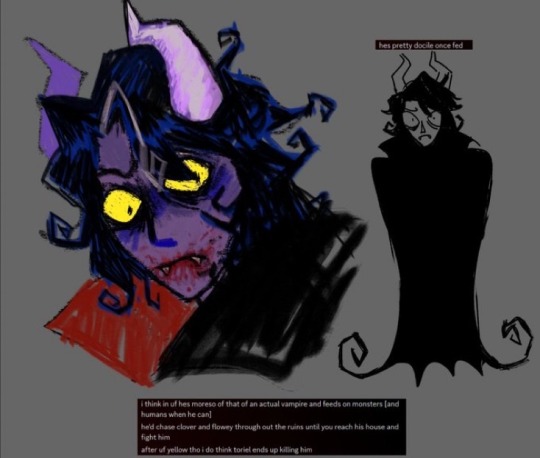
#autism making me go places i wouldn’t even go near with a gun#i’ll do wild east next maybe#i already have an idea for starlo#undertale yellow#uty dalv#uty clover#undertale#underfell#my art#artists on tumblr#underfell yellow
303 notes
·
View notes
Text
Curse Workers by Holly Black (2010-2012)
Cassel is cursed. Cursed by the memory of the fourteen year old girl he murdered. Life at school is a constant trial. Life at home even worse. No-one at home is ever going to forget that Cassel is a killer. No-one at home is ever going to forget that he isn't a magic worker.
Cassel's family are one of the big five crime families in America. Ever since magic was prohibited in 1929 magic workers have been driven underground and into crime. And while people still need their touch, their curses, their magical killings, their transformations, times have been hard. His granddad has been driven to drink, his mother is in prison and his brothers detest him as the only one of their family who can't do magic.
But there is a secret at the centre of Cassel's family and he's about to inherit it. It's terrfying and that's the truth.
The Goblin Emperor by Katherine Addison (2014)
The youngest, half-goblin son of the Emperor has lived his entire life in exile, distant from the Imperial Court and the deadly intrigue that suffuses it. But when his father and three sons in line for the throne are killed in an "accident," he has no choice but to take his place as the only surviving rightful heir.
Entirely unschooled in the art of court politics, he has no friends, no advisors, and the sure knowledge that whoever assassinated his father and brothers could make an attempt on his life at any moment.
Surrounded by sycophants eager to curry favor with the naïve new emperor, and overwhelmed by the burdens of his new life, he can trust nobody. Amid the swirl of plots to depose him, offers of arranged marriages, and the specter of the unknown conspirators who lurk in the shadows, he must quickly adjust to life as the Goblin Emperor. All the while, he is alone, and trying to find even a single friend... and hoping for the possibility of romance, yet also vigilant against the unseen enemies that threaten him, lest he lose his throne – or his life.
The Looking Glass Wars by Frank Beddor (2004-2009)
When Alyss Heart, newly orphaned heir to the Wonderland throne, flees through the Pool of Tears to escape her murderous Aunt Redd, she finds herself lost and alone in Victorian London. Befriended by an aspiring author named Lewis Carrol, Alyss tells the violent, heartbreaking story of her young life. Alyss trusts this author to tell the truth so that someone, somewhere will find her and bring her home. But he gets the story all wrong. He even spells her name incorrectly!
Fortunately, Royal Bodyguard Hatter Madigan knows all too well the awful truth of Alyss' story - and he's searching every corner of our world to find the lost princess and return her to Wonderland, to battle Redd for her rightful place as the Queen of Hearts.
East by Edith Pattou (2003-2018)
Rose has always felt out of place in her family, a wanderer in a bunch of homebodies. So when an enormous white bear mysteriously shows up and asks her to come away with him — in exchange for health and prosperity for her ailing family — she readily agrees. The bear takes Rose to a distant castle, where each night she is confronted with a mystery. In solving that mystery, she loses her heart, discovers her purpose, and realizes her travels have only just begun.
Circle of Magic by Tamora Pierce (1997-1999)
With her gift of weaving silk thread and creating light, Sandry is brought to the Winding Circle community. There she meets Briar, a former thief who has a way with plants; Daja, an outcast gifted at metalcraft; and Tris, whose connection with the weather unsettles everyone, including herself. At Winding Circle, the four misfits are taught how to use their magic - and to trust one another. But then disaster strikes their new home. Can Sandry weave together four kinds of magical power and save herself, her friends, and the one place where they've ever been accepted?
The Chronicles of Alice by Christina Henry (2015-2020)
In a warren of crumbling buildings and desperate people called the Old City, there stands a hospital with cinderblock walls which echo the screams of the poor souls inside.
In the hospital, there is a woman. Her hair, once blond, hangs in tangles down her back. She doesn't remember why she's in such a terrible place. Just a tea party long ago, and long ears, and blood...
Then, one night, a fire at the hospital gives the woman a chance to escape, tumbling out of the hole that imprisoned her, leaving her free to uncover the truth about what happened to her all those years ago.
Only something else has escaped with her. Something dark. Something powerful. And to find the truth, she will have to track this beast to the very heart of the Old City, where the rabbit waits for his Alice.
Sunshine by Robin McKinley (2003)
"Sunshine" is what everyone calls her. She works long hours in her family's coffeehouse, making her famous "Cinnamon Rolls as Big as Your Head," Bitter Chocolate Death, Caramel Cataclysm, and other sugar-shock specials that keep the customers coming. She's happy in her bakery--which her stepfather built specially for her--but sometimes she feels that she should have life outside the coffeehouse. One evening she drives out to the lake to get away from her family, to be alone. There hasn't been any trouble at the lake for years.But there is trouble that night for Sunshine. She is abducted by a gang of vampires who shackle her to the wall of an abandoned mansion, within easy reach of a figure stirring in the moonlight. Sunshine knows that he is a vampire and that she is to be his dinner. Yet when dawn breaks he has not attempted to harm her.And now he needs her help to survive the day...
Amina al-Sirafi by Shannon Chakraborty (2023-present)
A pirate of infamy and one of the most storied and scandalous captains to sail the seven seas.
Amina al-Sirafi has survived backstabbing rogues, vengeful merchant princes, several husbands, and one actual demon to retire peacefully with her family to a life of piety, motherhood, and absolutely nothing that hints of the supernatural.
But when she’s offered a job no bandit could refuse, she jumps at the chance for one final adventure with her old crew that will make her a legend and offers a fortune that will secure her and her family’s future forever.
Yet the deeper Amina dives the higher the stakes. For there’s always risk in wanting to become a legend, to seize one last chance at glory, to savour just a bit more power…and the price might be your very soul.
October Daye by Seanan McGuire (2009-present)
The world of Faerie never disappeared: it merely went into hiding, continuing to exist parallel to our own. Secrecy is the key to Faerie's survival—but no secret can be kept forever, and when the fae and mortal worlds collide, changelings are born. Half-human, half-fae, outsiders from birth, these second-class children of Faerie spend their lives fighting for the respect of their immortal relations. Or, in the case of October "Toby" Daye, rejecting it completely. After getting burned by both sides of her heritage, Toby has denied the fae world, retreating into a "normal" life. Unfortunately for her, Faerie has other ideas.
The murder of Countess Evening Winterrose, one of the secret regents of the San Francisco Bay Area, pulls Toby back into the fae world. Unable to resist Evening's dying curse, which binds her to investigate, Toby is forced to resume her old position as knight errant to the Duke of Shadowed Hills and begin renewing old alliances that may prove her only hope of solving the mystery...before the curse catches up with her.
The Near Witch by V. E. Schwab (2011)
The Near Witch is only an old story told to frighten children.
If the wind calls at night, you must not listen. The wind is lonely, and always looking for company.
And there are no strangers in the town of Near.
These are the truths that Lexi has heard all her life.
But when an actual stranger-a boy who seems to fade like smoke-appears outside her home on the moor at night, she knows that at least one of these sayings is no longer true.
The next night, the children of Near start disappearing from their beds, and the mysterious boy falls under suspicion. Still, he insists on helping Lexi search for them. Something tells her she can trust him.
As the hunt for the children intensifies, so does Lexi's need to know-about the witch that just might be more than a bedtime story, about the wind that seems to speak through the walls at night, and about the history of this nameless boy.
#best fantasy book#poll#curse workers#the goblin emperor#the looking glass wars#east#circle of magic#the chronicles of alice#sunshine#amina al sirafi#october daye#the near witch
67 notes
·
View notes
Text
#united nations relief and works agency for palestine refugees in the near east (unrwa)#knesset#israel#israel hamas war#refugees#palestinian refugees#occupied palestine#genocide
33 notes
·
View notes
Text
"Ram in the Thicket" Statuette from Ur (Iraq), c.2600-2400 BCE: this statuette is made of lapis lazuli, shells, gold, silver, limestone, copper, and wood

This sculpture is about 4,500 years old. It was unearthed back in 1929, during the excavation of the "Great Death Pit" at the Royal Cemetery of Ur, located in what was once the heart of Mesopotamia (and is now part of southern Iraq).
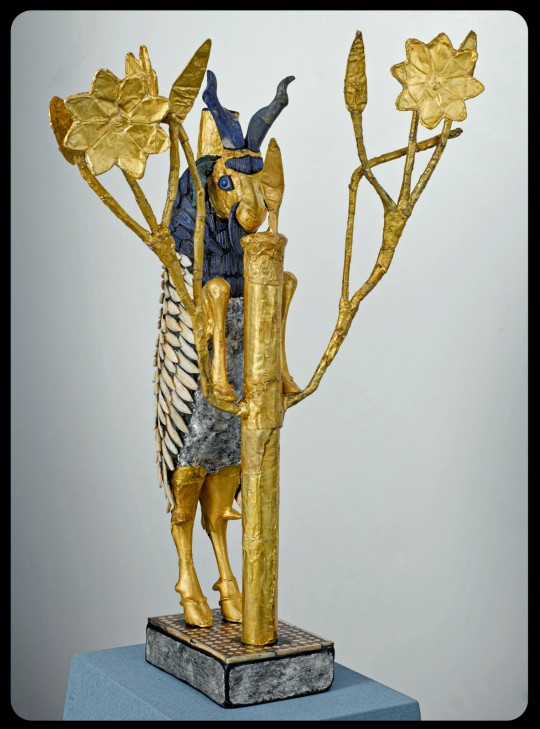
Sir Leonard Woolley, who led the excavations at the site, nicknamed the statuette "ram caught in a thicket" as a reference to the Biblical story in which Abraham sacrifices a ram that he finds caught in a thicket. The statuette is still commonly known by that name, even though it actually depicts a markhor goat feeding on the leaves of a flowering tree/shrub. Some scholars refer to it as a "rampant he-goat" or "rearing goat," instead.

It was carved from a wooden core; gold foil was then carefully hammered onto the surface of the goat's face and legs, and its belly was coated in silver paint. Intricately carved pieces of shell and lapis lazuli were layered onto the goat's body in order to form the fleece. Lapis lazuli was also used to create the goat's eyes, horns, and beard, while its ears were crafted out of copper.
The tree (along with its delicate branches and eight-petaled flowers) was also carved from a wooden base, before being wrapped in gold foil.
The goat and the tree are both attached to a small pedestal, which is decorated with silver paint and tiny mosaic tiles made of shell, lapis lazuli, and red limestone.

This artifact measures 42.5cm (roughly 16 inches) tall.
A second, nearly-identical statuette was also found nearby. That second sculpture (which is also known as the "ram in the thicket") is pictured below:

There are a few minor differences between the two sculptures. The second "ram" is equipped with gold-covered genitals, for example, while the first one has no genitals at all; researchers believe that the other sculpture originally had genitals that were made out of silver, but that they eventually corroded away, just like the rest of the silver on its body.
The second "ram" is also slightly larger than the first, measuring 45.7cm (18 in) tall.
Both statuettes have a cylindrical socket rising from the goats' shoulders, suggesting that these sculptures were originally used as supports for another object (possibly a bowl or tray).

The depiction of a goat rearing up against a tree/shrub is a common motif in ancient Near Eastern art, but few examples are as stunning (or as elaborate) as these two statuettes.
Sources & More Info:
Penn Museum: Collections Highlight
Penn Museum: Ram in the Thicket
Expedition Magazine: Rescue and Restoration: a History of the Philadelphia "Ram Caught in a Thicket" (PDF version)
The British Museum: Ram in the Thicket
A Companion to Ancient Near Eastern Art: Statuary and Reliefs
World Archaeology: Ram in the Thicket
Cambridge Scholars Publishing: Colour in Sculpture: a Survey from Ancient Mesopotamia to the Present (PDF excerpt)
Goats (Capra) from Ancient to Modern: Goats in the Ancient Near East and their Relationship with the Mythology, Fairytale, and Folklore of these Cultures
#archaeology#history#artifact#anthropology#ram in the thicket#sumerian#mesopotamia#ur#goat#ancient art#sculpture#iraq#ancient near east#art#lapis lazuli#gold#statues#mixed media#inanna#dumuzi#mythology#rampant he-goat#has a nice ring to it
192 notes
·
View notes
Text
Your reminder to Click for Palestine today!
And/or donate directly to the UNRWA if you have the means!
#unrwa#unrwafunding#DonateToUNRWA#united nations relief and works agency for palestine refugees in the near east#end israeli occupation#colonialism#colonizers#make a difference in the world#how to make a difference#humanitarian assistance#humanitarianism#WE WILL NOT BE SILENCED#palestine is under attack#palestine is a country#palestine is strong#palestine israel war#lend a hand#how to help palestine#palestinian protest#take action#arab.org#UNWRA#daily reminder#palestine israel conflict#help gaza#colonization#make a difference#how to help#humanitarian aid#humanitarian crisis
3K notes
·
View notes
Text

In the heart of the ancient Achaemenid Empire, a masterpiece of Persian artistry emerges—a rhyton (drinking horn or in the shape of a horn) carved from the deep blue lapis lazuli and adorned with gold, taking the form of a majestic ibex (mountain goat).
Dating back to the 6th to 5th century BCE, this exquisite ceremonial vessel not only exemplifies the sophisticated craftsmanship and rich symbolism of the time but also provides a fascinating glimpse into the cultural and economic prowess of ancient Persia.
[Description and Material]:
*Material:
Lapis lazuli, a semi-precious stone prized for its deep blue color, was highly valued in ancient Persia and sourced primarily from what is now Afghanistan.
*Form:
The rhyton is shaped like an ibex, a type of wild goat with prominent, curved horns, reflecting the importance of nature and animal motifs in Persian art.
[Use]:
*Function:
A rhyton is a type of vessel typically used for drinking or pouring liquids, especially in ceremonial contexts. The liquid would be poured from the top and flow out through the spout, which could be the mouth of the animal in this case.
*Ceremonial Role:
Rhytons were often used in religious and royal ceremonies. The choice of lapis lazuli and the intricate craftsmanship suggest that this particular rhyton was likely used by the elite, possibly in rituals associated with the Zoroastrian religion or royal banquets.
[Cultural and Historical Significance]:
*Art and Symbolism: The ibex design reflects the importance of wildlife in Persian culture and the symbolic use of animals in conveying power and divinity. The ibex, with its strong and agile form, could symbolize qualities such as strength and resilience.
*Trade and Wealth: The use of lapis lazuli indicates extensive trade networks and the wealth of the Achaemenid Empire, as this material was not locally sourced and had to be imported.
*Royal Patronage: The Achaemenid rulers were great patrons of the arts, and such luxurious items underscore their desire to display their wealth, power, and cultural sophistication.
[Academic Perspective on Material Culture]:
*Cultural Synthesis:
Scholars often view Achaemenid art, including rhytons, as a synthesis of various cultural influences, including Mesopotamian, Egyptian, and Greek, reflecting the diverse and cosmopolitan nature of the empire.
*Representation of Power:
Academics see these artifacts as representations of royal propaganda, showcasing the divine right and grandeur of the Persian kings.
*Symbol of Status:
In material culture studies, such high-quality items are considered symbols of social status and wealth. They provide insights into the social hierarchy and economic conditions of the time.
*Artistic Techniques:
The craftsmanship of the rhyton is analyzed for its artistic techniques, such as carving and polishing lapis lazuli, which indicate advanced skills and aesthetic values.
[Notable Examples]:
Museums and Collections: Notable examples of such rhytons can be found in major museum collections, such as the British Museum and the Louvre, where they are studied and displayed as prime examples of Achaemenid artistry and craftsmanship.
In conclusion, the lapis lazuli rhyton in the shape of an ibex from the Achaemenid period is a significant artifact that illustrates the artistic, cultural, and economic aspects of ancient Persia. It serves as a key piece of material culture, providing valuable insights into the ceremonial practices, trade networks, and socio-political dynamics of the Achaemenid Empire.
#ancient Persia#Zoroastrianism#ceremonial vessel#rhyton#lapis lazuli#Iran#Mesopotamia#Ancient history#Near East#ancient civilisations#ancient art#ancient craft#archaeology#Achaemenid#Achaemenid Culture
66 notes
·
View notes
Text

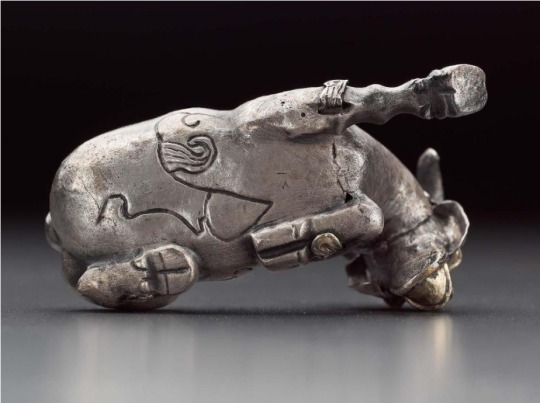
~ Mountain goat.
Place of origin: Near Eastern, Iranian
Period: Elamite, Proto-Elamite
Date: 3500–2700 B.C.
Medium: Silver and sheet gold.
#ancient#history#ancient art#museum#archeology#ancient sculpture#ancient history#archaeology#iran#iranian#near east#near eastern#elamite#3500 b.c.#2700 b.c#silver#goat#mountain goat
2K notes
·
View notes
Text
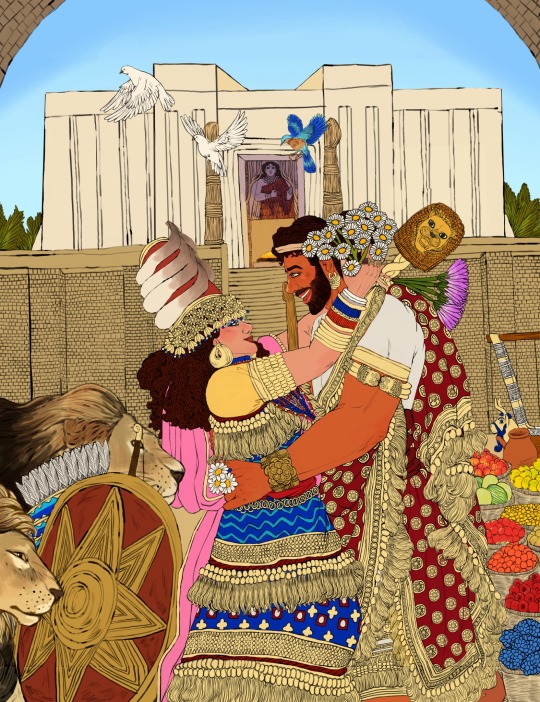
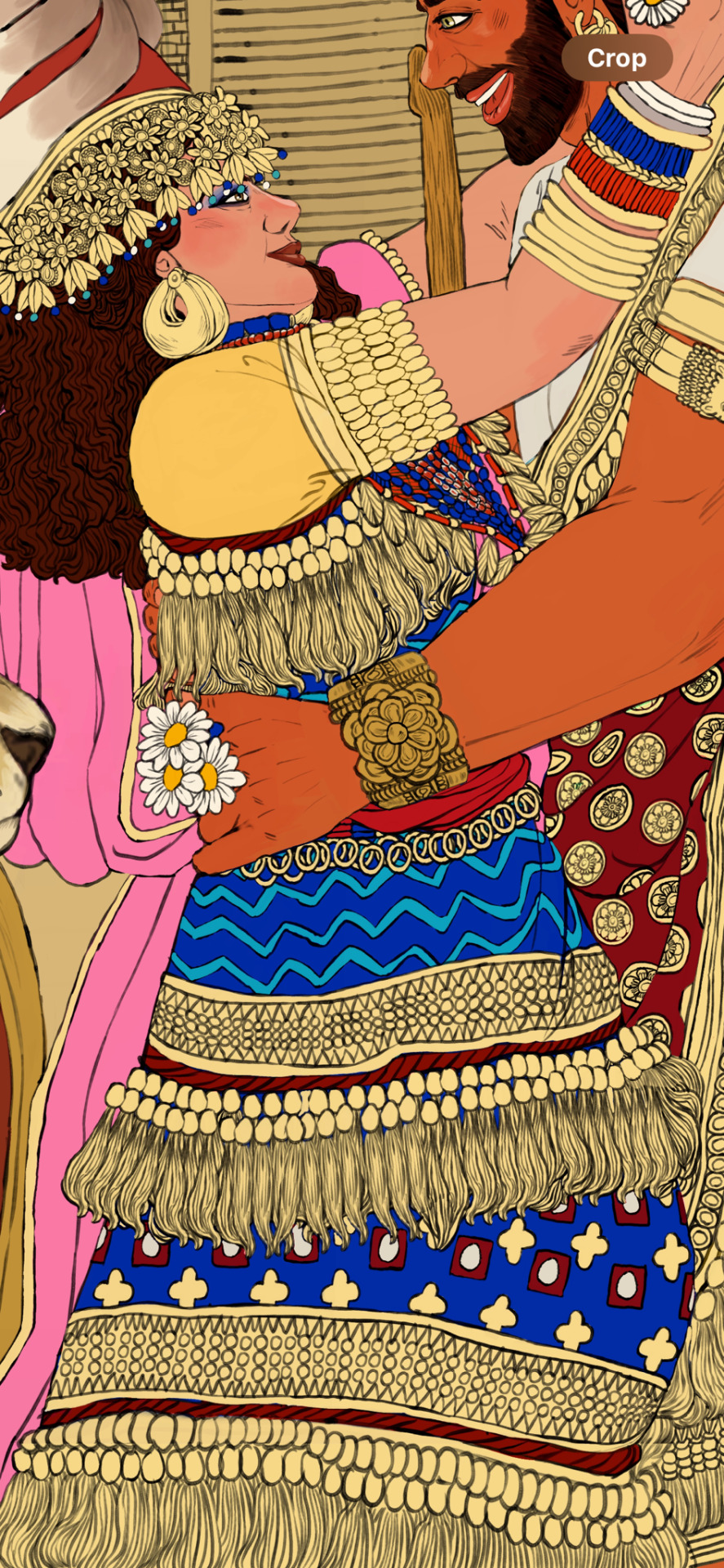
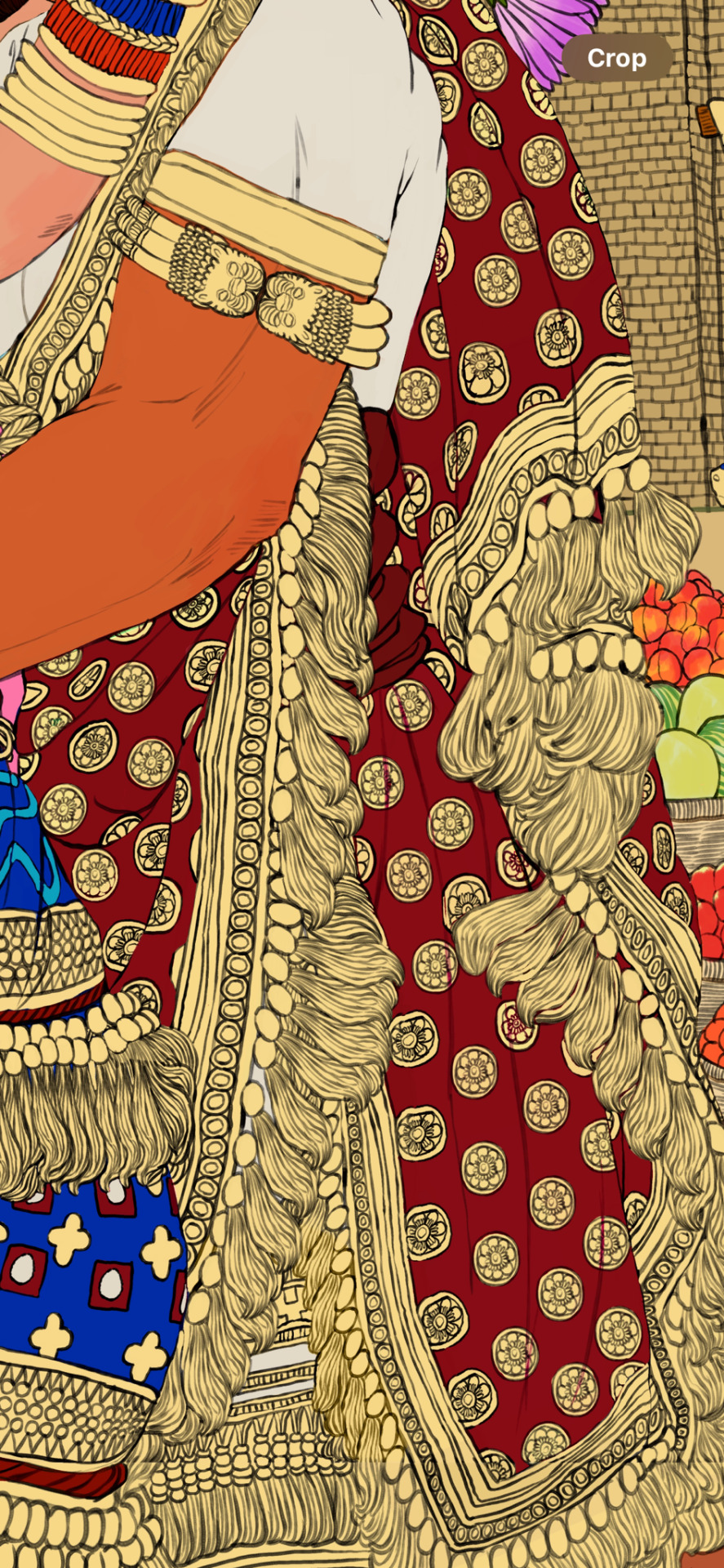
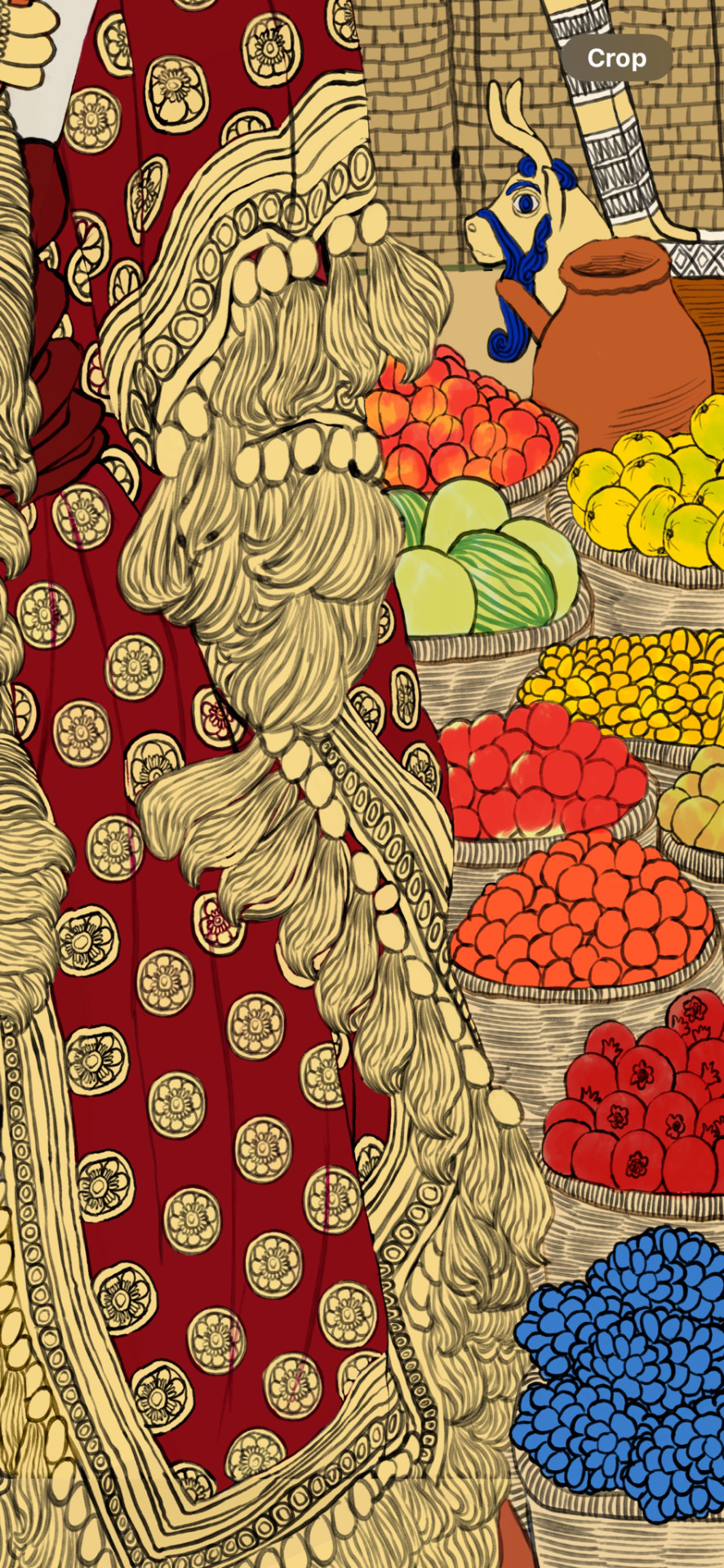
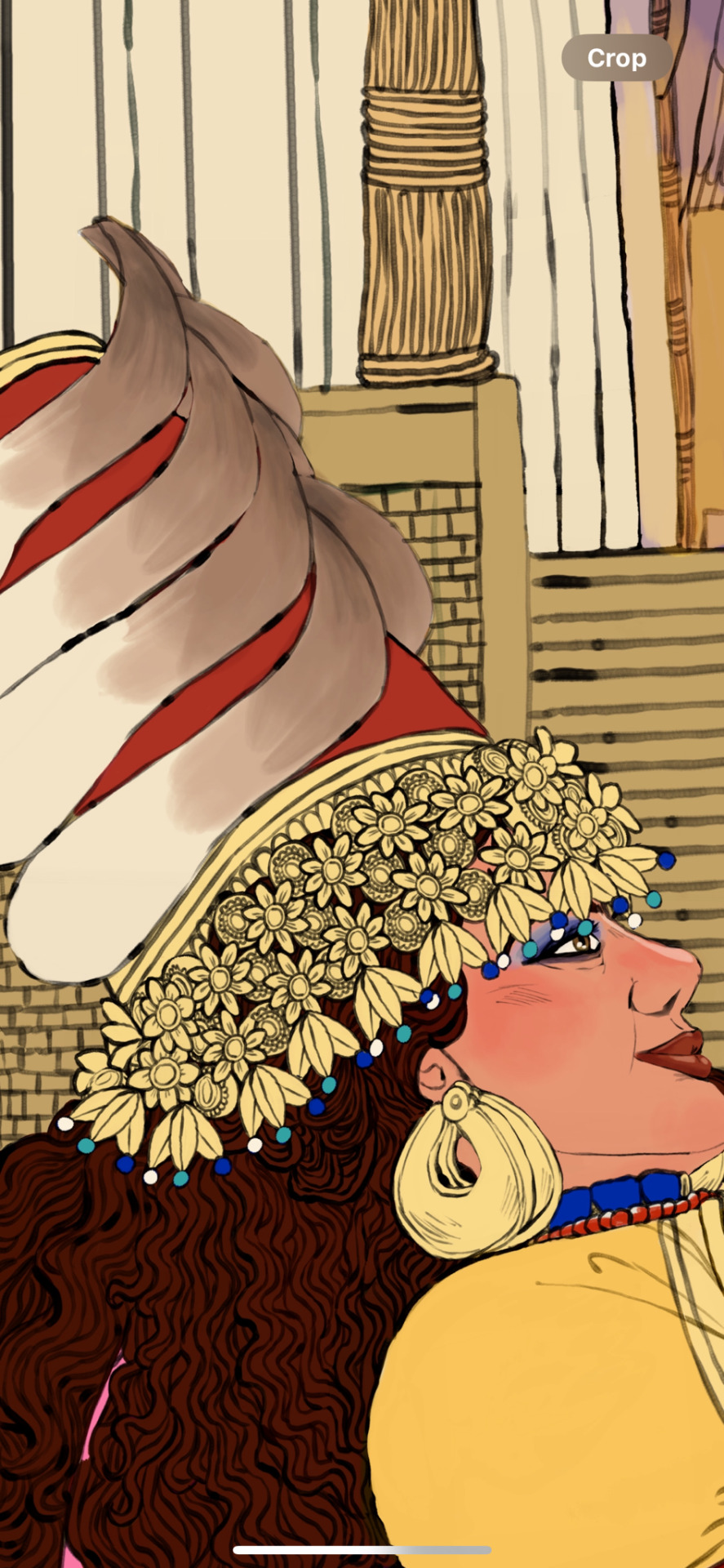
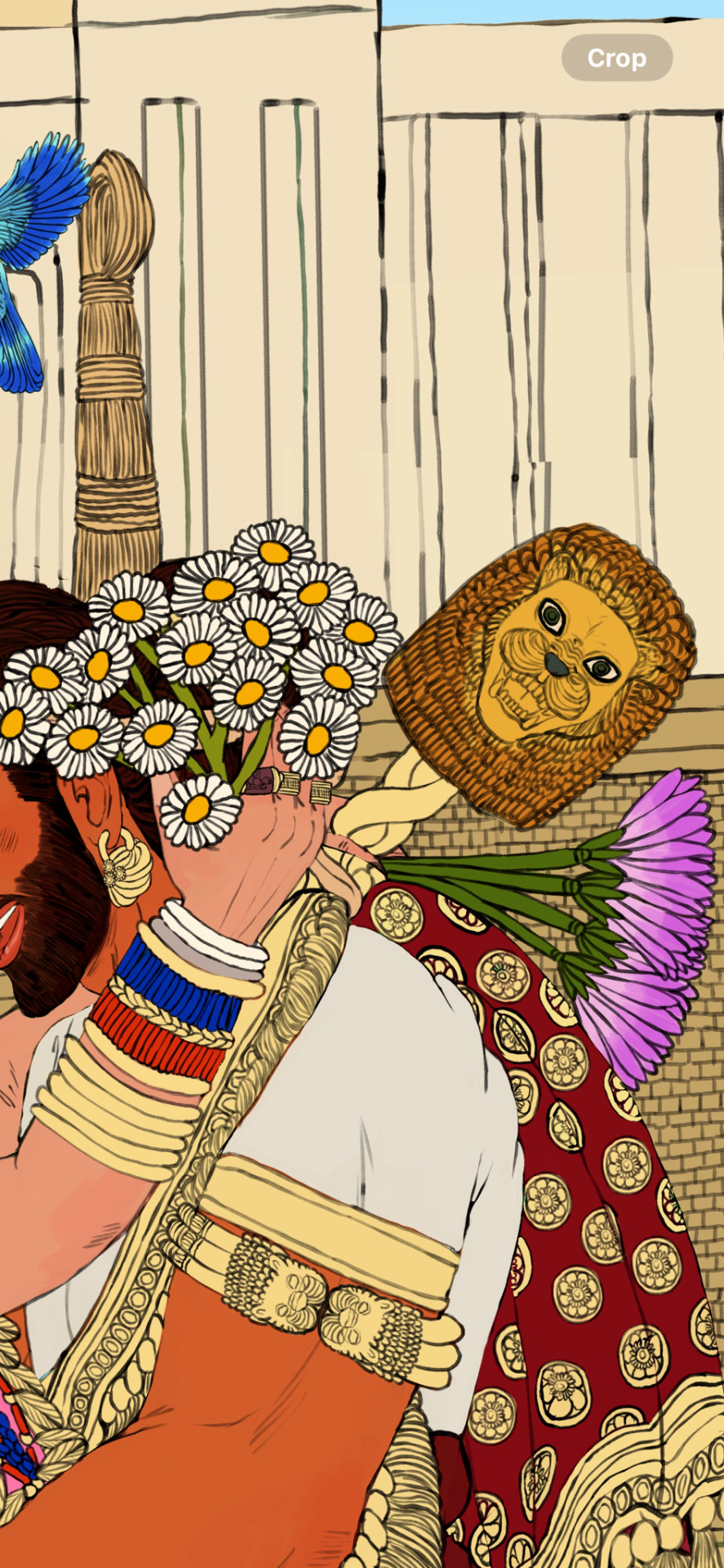
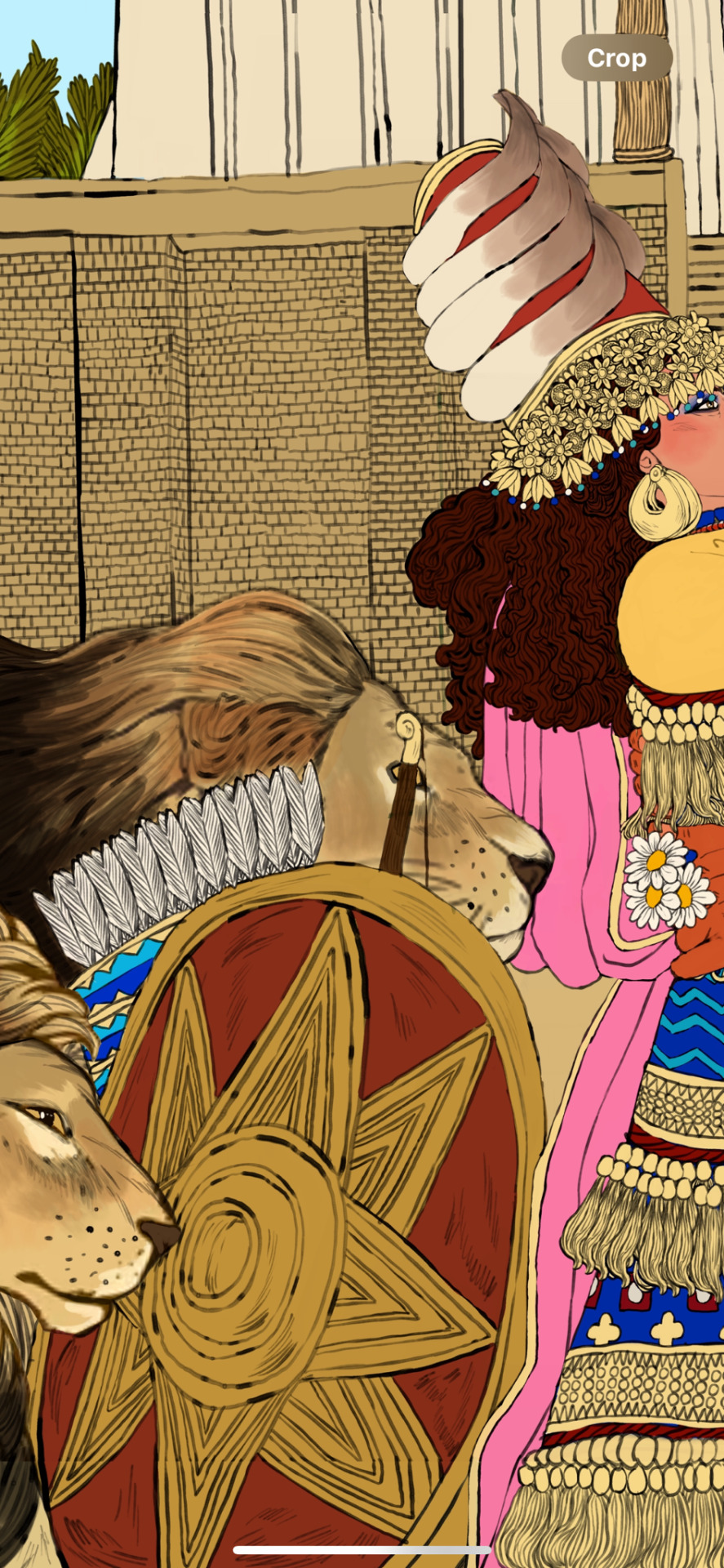
Aphrodite and Adonis in their older Mesopotamian forms; Inanna-Ishtar, the warlike goddess of beauty, fertility, and love and Dumuzi, her husband and the shepherd king of ageless Uruk.🦁🐏
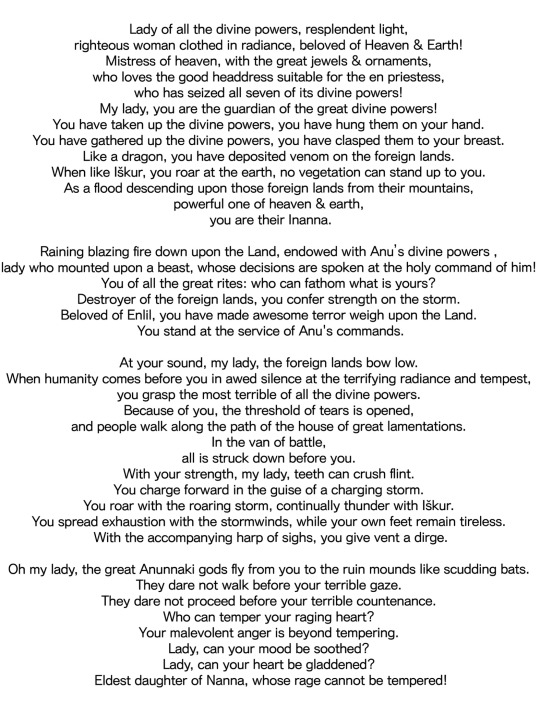
Here are the poem snippet that I used as the main inspo, written by Enhueduanna, high priestess of the moon god Nanna/Sin and daughter of King Sargon & Queen Tashlultum of Akkad. As she became a devotee of Inanna and composed various exaltation hymns to the goddess, she also composed 42 hymns addressed to many temples and sanctuaries across the land of Sumer and Akkad, the so-called Temple Hymns; which makes her become the earliest known named author in world history.
The ziggurat temple background was based on the Eanna temple (”House” of Inanna) in Uruk, which was built during the 3rd dynasty of Ur (21st cent BC) and had been mentioned throughout in the Epic of Gilgamesh; while their clothing was from later recent Assyrian & Babylonian era. All of the offerings were based on the depictions on the Warka vase from the National Museum of Iraq - an agricultural festival that seemed to be connected with the rituals involved with the goddess.
74 notes
·
View notes